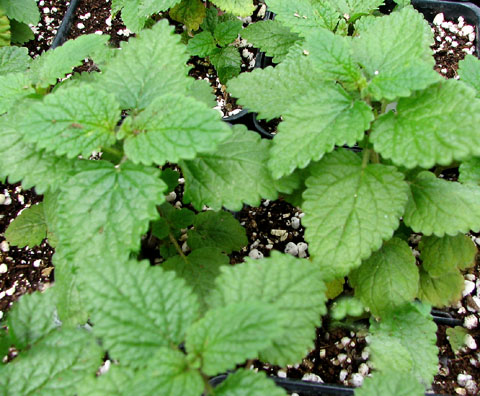Plant Specifications
Melissa officinalis. Hardy Perennial. Morning Sun or Filtered Shade. Height: 24” Width: 24”
Lemon Balm is a perennial herb in the mint family Lamiaceae, native to southern Europe and the Mediterranean region.
The plant’s woody stem is square and branching, and has at each joint pairs of broad heart-shaped, toothed leaves that emit a fragrant lemon scent when bruised. When blooming, the white flowers full of nectar appear. These attract bees, hence the genus name Melissa (Greek for ‘honey bee’).
In the Garden
Lemon balm smells like fresh cut lemons. They also have a distinct lemon taste. The flowers, white or yellowish, are in loose, small bunches and bloom from June to October. Like the name implies, bees are highly attracted to them. Lemon balm clumps and spreads vegetatively as well as by seed. By trimming this fast growing plant you will find how lushly it grows back. During its rapid growth stage – the Summer – it needs a bit more water and compost feeding. Avoid placing the plant the hottest sunlight, instead look for early morning sun or filtered/partly shaded afternoon sun The plant’s hairy roots can get root bound in a pot. The secret to the Lemon balm you need to harvest all he leaves to the base of the plant.
Plant Uses
Just a handful of fresh lemon balm from the garden is wonderful with its lemon flavor in brewing teas, punches, wines, salads, fruit dishes and desserts. At the farm in the summer when pwople come to visit, we often serve cold Lemon Balm or Tea in the evening Lemon Balm wine coolers. The high citronella content of this plant can be effective as a mosquito repellent.

